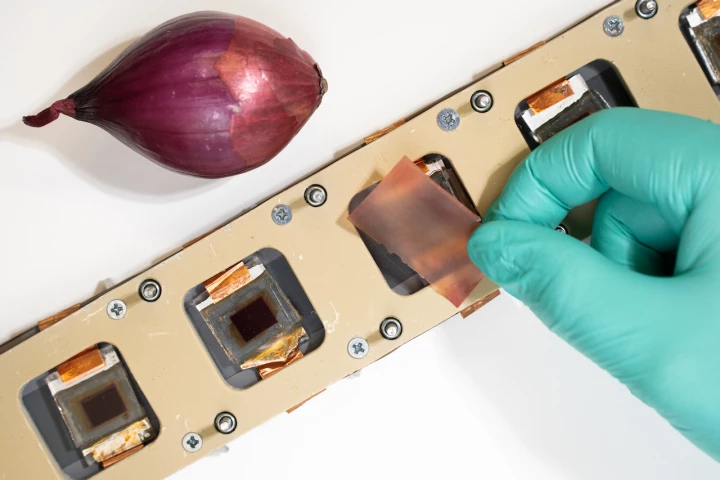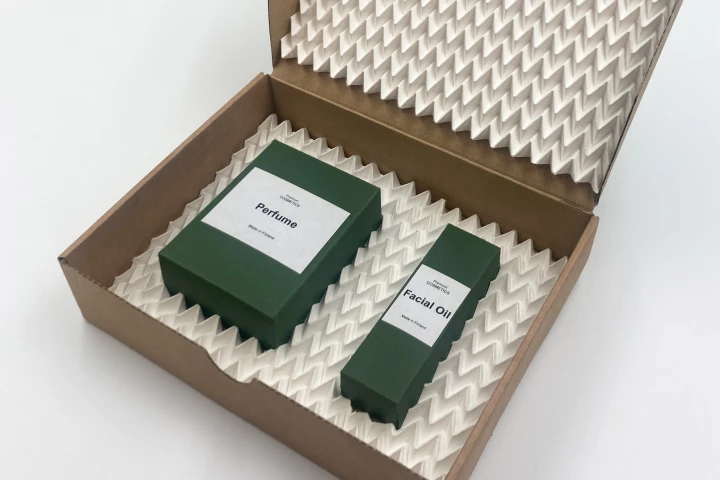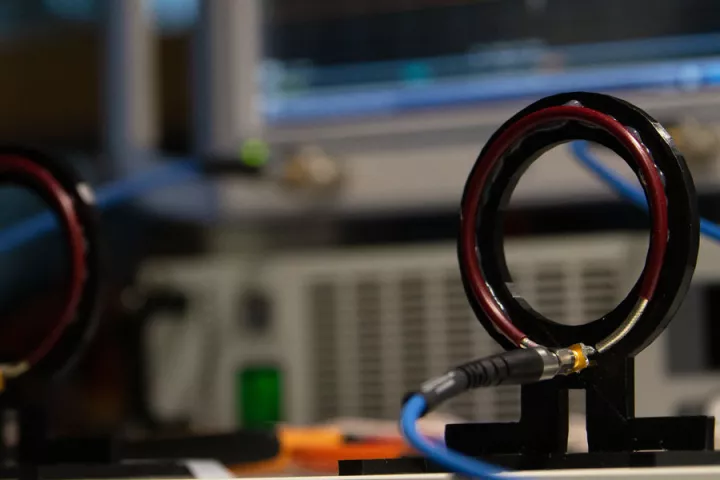Aalto University
-
Massively faster, more scalable, and more energy efficient than electronic computation, single-shot tensor computing uses light’s amplitude and phase to store, process, and send data. It could "create a new generation of optical computing systems."
-
Solar cells are subjected to a lot of harmful ultraviolet light, as they're typically placed for maximum sunlight exposure. A new eco-friendly coating could help protect them from those UV rays, and its active ingredient is extracted from onion skin.
-
Old, discarded wind turbine blades don't biodegrade. They do, however, float if sealed. Finnish startup Reverlast is capitalizing on that fact, by taking end-of-use blades and converting them into stylish floating docks.
-
Non-recyclable, non-biodegradable, petroleum-based EPS (expanded polystyrene) foam packaging is not eco-friendly stuff. There could soon be a greener and snazzier-looking alternative, however, in the form of origami-folded cardboard.
-
After decades of physics-based theorizing, researchers have succeeded in creating a novel optical metamaterial using conventional materials. Its enhanced electromagnetic effect may make true one-way glass a reality and solar panels more efficient.
-
Scientists have developed what they call the most water-repellent surface ever. By giving it a liquid-like coating that defies usual designs, water will roll off the surface at angles 500 times shallower than other superhydrophobic materials.
-
Researchers have turned lignin into nanoparticles that can create a transparent coating with antifog properties or a colorful antireflective surface, transforming this abundant waste product into a useful material with diverse applications.
-
Researchers have mapped where and how strongly we experience different kinds of love, covering everything from romantic love to love for strangers. The findings shed light on how context and the object of love affects our subjective feelings of it.
-
Adoption of wireless charging has been fairly slow, but it could pick up if it worked over longer distances. Now Aalto University engineers have developed a new system that can allow more efficient wireless power transmission over longer distances.
-
Using a newly developed VR game, researchers believe they have created a tool that can objectively diagnose ADHD. The system tracks a user's eye movements and has also been proposed as a way of monitoring the efficacy of certain therapeutic interventions.
-
Ordinarily, wireless chargers emit an electromagnetic field in just one direction, limiting the number of devices they can charge at once. A new charger, however, produces a donut-shaped field, for the simultaneous charging of multiple gadgets.
-
Researchers in Europe have developed an entirely new form of carbon, one that bears similarities to the wonder material graphene but with some useful differences that could open up new possibilities in electronics and advanced lithium batteries.
Load More











